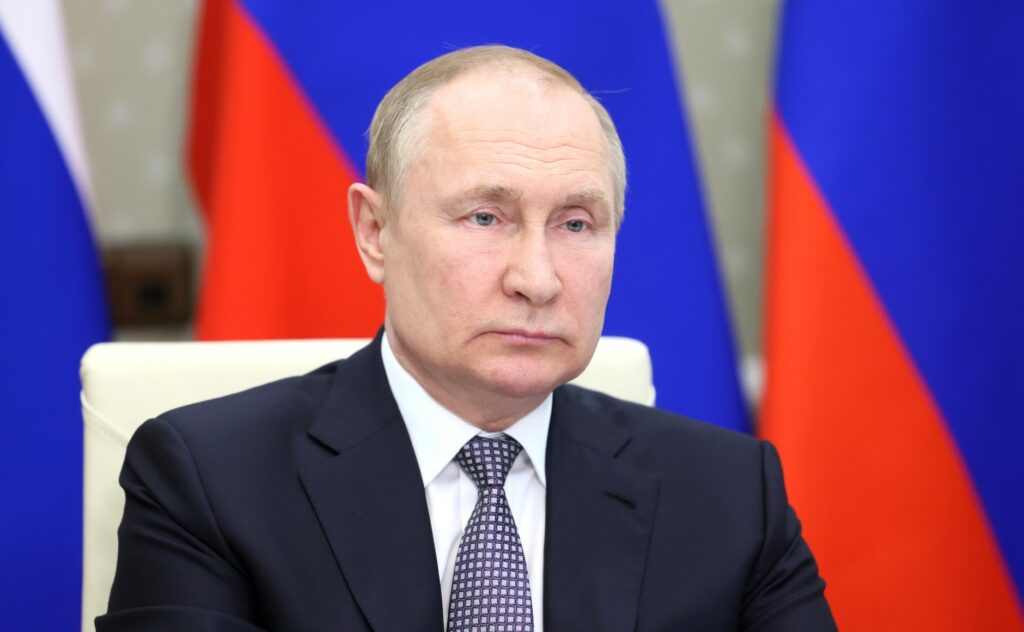Putin’s Economic Gamble: War Spending Drives Russia Toward Financial Collapse

Despite recent claims of economic resilience, Russia’s financial stability is hanging by a thread as unsustainable war spending drains the country’s resources. President Vladimir Putin’s administration has channeled massive amounts of money into the defense sector, prioritizing military production over civilian needs. While this approach has temporarily bolstered GDP figures, it is leading Russia toward an impending economic disaster, according to a recent analysis by Fortune.
The Mirage of Economic Strength
The Russian government has aggressively increased spending to support its military ambitions, but this has come at a significant cost to the broader economy. Resources have been redirected from productive civilian sectors, leading to a sharp increase in inflation and a devaluation of the ruble. Despite higher tax revenues, driven by the depreciated ruble and increased taxes on oil, gas, and other sectors, Russia’s budget deficit remains substantial. The country’s reserves are dwindling, with only around $100 billion in liquid assets left, excluding frozen assets held in the West.
Putin’s reliance on China has grown, with yuan-denominated holdings giving Beijing considerable leverage over Russia’s financial future. However, this dependence also reveals the precarious state of Russia’s economy, as it becomes increasingly tied to the whims of its powerful neighbor.
Civilian Struggles Amid Military Focus
The Kremlin’s heavy focus on military spending has exacerbated economic inequality in Russia. While the government has allocated trillions of rubles to military payments, the civilian population is facing wage stagnation and rising living costs. Public sector workers, including doctors, report that their salaries are insufficient to cover basic needs, with many forced to take on multiple jobs. This disparity highlights the broader issue of resource misallocation, where military spending is prioritized over the welfare of the general population.
Russia’s economic strategy has also led to a brain drain, with millions of educated workers leaving the country. This exodus has further strained the labor market, driving up wages in the military-industrial complex but stifling growth in other sectors.
Structural Weaknesses and Inflationary Pressures
The inflationary pressures on Russia’s economy are intensifying, despite the Central Bank’s efforts to control them through high interest rates. The disconnect between increased military production and stagnant consumer goods production has created a supply-demand mismatch, driving up prices even further. The Central Bank’s preliminary estimates indicate a significant drop in imports, exacerbating the economic imbalance.
Moreover, Russia’s business environment is deteriorating, with labor shortages pushing wages higher but outpacing productivity gains. This wage growth, while seemingly beneficial to workers, is fueling further inflation and deepening the economic crisis.
The Illusion of External Investment
The Kremlin’s hope that investors from China and India would replace Western companies has proven unrealistic. Chinese financial institutions, wary of secondary sanctions, are increasingly reluctant to engage with Russia, further isolating the country from global financial markets. India’s investment in Russia has stagnated, and many Chinese companies have suspended operations, highlighting the failure of Russia’s pivot toward these nations.
The forced reliance on Chinese technology has also increased costs for Russian companies. For example, Novatek reported a $4 billion increase in capital expenditures for its Arctic LNG-2 project due to the need to replace Western equipment with Chinese alternatives.
A Looming Financial Crisis
Russia’s current economic trajectory is unsustainable. The country is facing a perfect storm of challenges: depleting foreign reserves, a strained labor market, rising inflation, and the heavy burden of military expenditures. The illusion of economic resilience is beginning to crumble, revealing deep-seated structural flaws that threaten to destabilize the entire economy.
As Russia continues to prioritize military spending over productive investments, the long-term consequences of its economic policies are becoming increasingly apparent. The country is heading toward a significant economic slowdown or even a recession, with severe consequences that will unfold in the years ahead. Putin’s war-driven economic strategy is pushing Russia toward a disaster from which it may struggle to recover.

